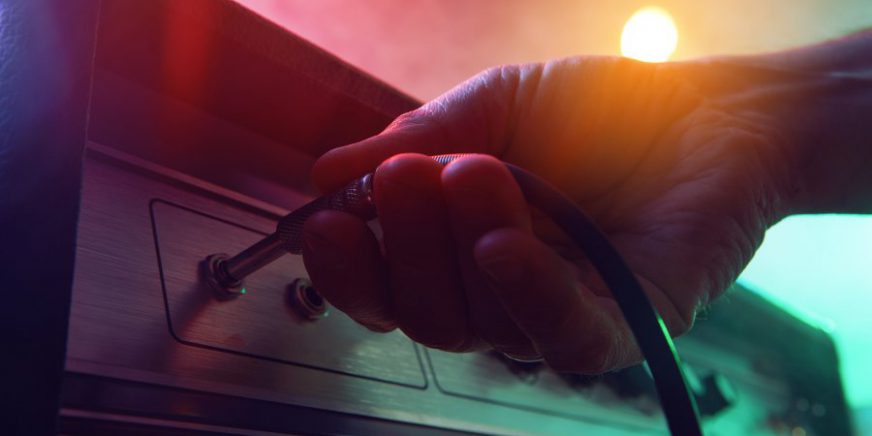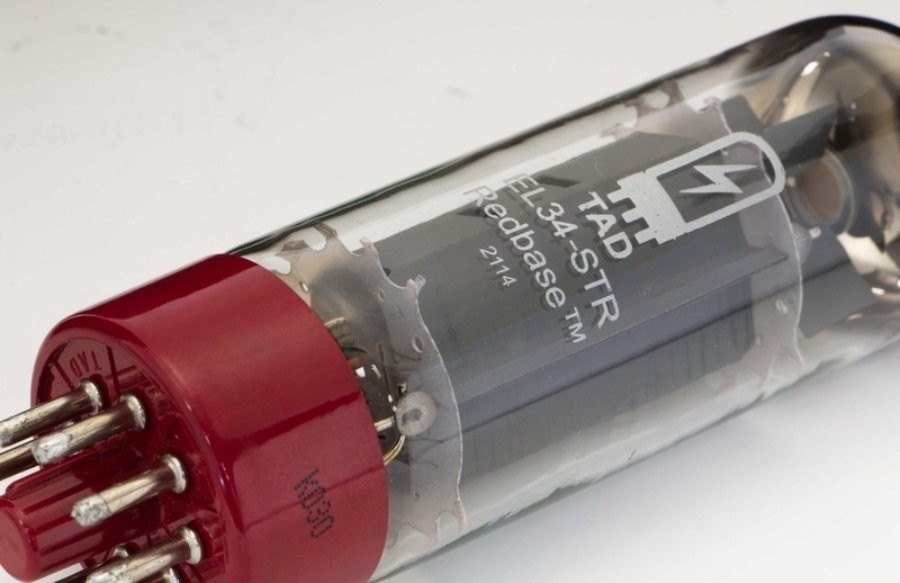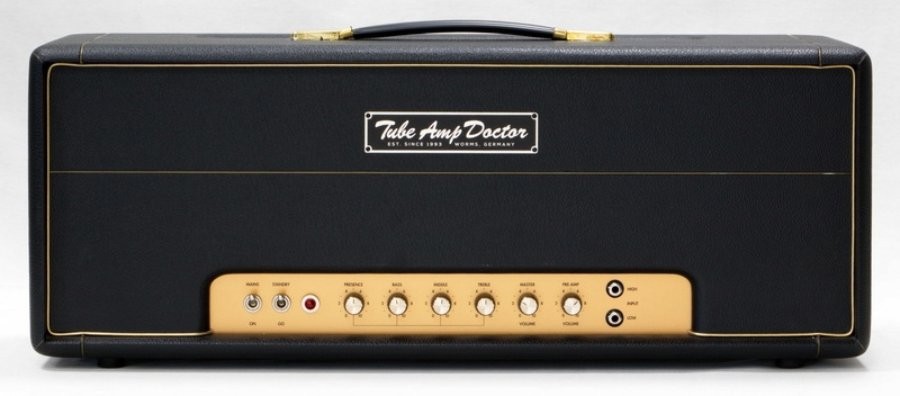«Everything about legendary models and their unmatched sound»
Fat rhythm guitar, smooth solos, and screaming riffs – high-gain sounds are essential in rock, metal, and more. To create these sounds, guitarists started challenging their amps with new demands back in the 1960s. Many of these pioneers were also the greatest guitarists of a whole generation. From Pete Townshend to Jimi Hendrix – they all contributed to creating the distorted sound of the metal and hard rock scene. Today, we’ll have a look at some of the most legendary tube amplifiers that are classic choices for harder genres, and we’ll embark on a journey into the history of distorted guitar sounds.
A Brief History of High-Gain Amps
What is now an essential part of music was an extreme concept at the beginning of the electric guitar wave in the 1950s and 1960s. At that time, tube amplifiers were used to extract as clear and undistorted sounds from instruments as possible. However, tube saturation and relatively low wattage resulted in limited headroom – the ability to produce clear signals even at high volumes.
One of the key figures in developing new amplifier models was the British amp manufacturer Jim Marshall. He and his team developed the JTM 45 in 1962, which is now known as “THE Plexi.” The new circuit design relied on the power of tube distortion and found an innovative adopter in Pete Townshend of The Who. After further refinements, the JMP 100 Superlead was finally released in 1968. The 100-watt Plexi is now considered the epitome of the world-famous and celebrated Plexi sound, without which hard rock and metal would likely sound quite different today.
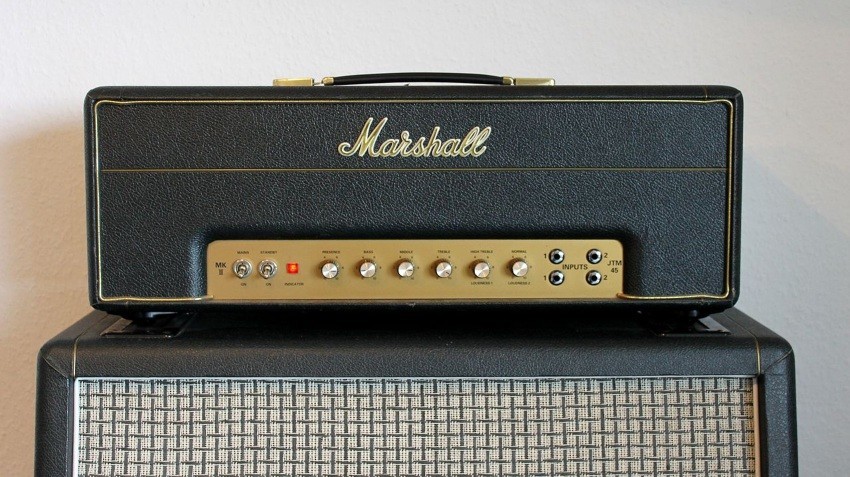
With the rise of the mighty Marshall stacks, competition naturally entered the market. Brands like Laney, Randall, Mesa/Boogie, and eventually Soldano introduced their versions of tube amplifiers and found grateful users among guitarists such as Rudolf Schenker and Kirk Hammett.
Especially with the emergence of heavy metal in the 1980s, all doors were open, and the number of manufacturers of classic high-gain amps continued to increase. Supported by digital technology, effects pedals, and modern manufacturing methods, there are still new sound possibilities available even today, beyond traditional tube amplifiers.
Technical Features – What Makes High-Gain Amps So Special?
Fat sound, heavy distortion – clearly, a good high-gain amp should sound like that. But what’s behind the distorted sounds? We’ll explore the technical features of these tube amplifiers. To deliver that extra something on the big stage and to present the predominantly midrange frequencies of guitars well, most high-gain amps manufacturers tend to work with higher power. Following the example set by Jim Marshall, the “100-watt rule” held sway for many years: Anything delivering less than 100 watts had no place in hard rock/metal.
While this mindset has evolved over time, top-notch tube amp models are still generally designed for higher power output.
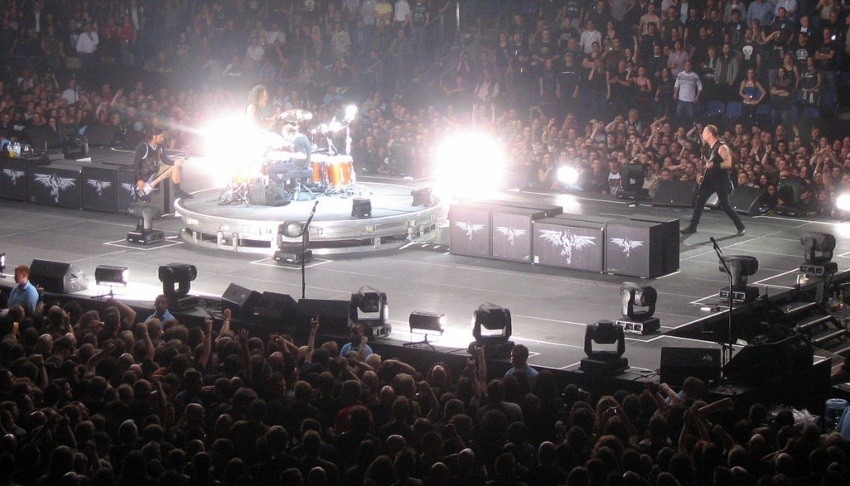
Preamp
A significant part of the aggressive distorted sounds in a tube amplifier comes from the overdriven preamp tubes. The sounds created, known as distortion, are characterized by a very hard and less harmonious character, providing the distorted guitar with a cutting, highly assertive sound.
As a result, high-gain amplifiers use preamp tubes that respond aggressively. For instance, the Mesa/Boogie Dual Rectifier uses the 12AX7A tubes.
Power Amp
While the preamp sections have to do a lot of work in the distorted range, the power amp should have sufficient reserves to provide headroom for higher volumes. In the case of heavy distortion, it depends on the playing style, not only on particularly harmonious power tube saturation but also on high-level preamp distortion. Typical power amp tubes for this area are, for example, the EL34 tubes used in the Marshall Plexi.
Legendary Models – 1960s to Today
To trace the evolution of today’s high-gain amps, we’ve compiled some of the most significant tube amp variations in this category. This compilation focuses less on the number of units produced or their prevalence and more on the musical significance of these amps in history. By the way, numerous TubeAmpDoctor amp kits keep the myth alive. Discover our sets in:
Marshall JMP 100 Superlead
The original Plexi paved the way for a whole range of influential artists and some of the greatest albums in rock history. In addition to Pete Townshend of The Who, Angus Young of AC/DC and Jimmy Page of Led Zeppelin also used amplifiers from Marshall.
The growling, harmonic distortion of the tube was excellent for a mix of pure overdrive sounds and more harmonic passages, as brilliantly demonstrated by Eric Clapton during his time with Cream.
Laney LA100 BL
Laney is a long-standing tube amp manufacturer that early on embraced the heavier side of guitar music with the LA100 BL. The LA100 BL marked a move onto the heavy stages in collaboration with Tony Iommi. The Black Sabbath guitarist used the 100-watt amplifier on the influential “Paranoid” album, in combination with an additional treble booster, which later became a standard feature developed by Laney’s engineers.
Randall 667
In 1970, when the former vice president of Fender started his own company, no one could have foreseen the success of high-gain amplifiers. With the Randall 667 high-gain amp, the engineers created an amplifier that would influence the sound of extreme metal bands for decades. The 667 sound was deliberately showcased by guitarists like Dimebag Darrell and Kirk Hammett, known for its metallic, almost screeching, and very treble-heavy gain stages.
Marshall JCM 800
The Marshall JCM 800 high-gain amp is still offered to this day, and for good reason. In the 1980s, guitarists from more extreme genres embraced the abundant power offered by the 100-watt tube amplifier: Slash, Randy Rhoads, and Zakk Wylde are just a few of the names associated with the full, accentuated, and assertive gain sound of the Marshall.
Soldano SLO-100
While some other manufacturers delivered brute force with their high-gain offerings, Soldano’s SLO-100 high-gain amp countered with a well-thought-out and innovative channel switching, making the amp much more flexible and versatile than its competitors. Consequently, users of these amplifiers come from various musical backgrounds: Mark Knopfler, Warren DeMartini (Ratt), or Vivian Campbell (DIO).

Mesa Boogie Dual Rectifier
In the 1990s, a new generation of metal guitarists took to the world’s stages. This call for a new form of high-gain amp became louder. The boutique manufacturer Mesa Boogie responded by introducing the Dual Rectifier, a new high-gain amp that created additional sound possibilities with intelligent rectifier technology (a combination of tube and transistor). The sonic possibilities of these amplifiers were embraced by the nu-metal scene and can be found in the works of bands like Korn, Limp Bizkit, Tool, or Gojira.

Diezel VH4
A German manufacturer that is considered a hidden gem by many guitarists is popular among rhythm guitarists for its uncompromising sound and tight sonic characteristics. The relatively small manufacturer has remained in the background, and major endorsements are rare. Nevertheless, for those who want to experience the sound of a Diezel, it’s worth taking a closer look at Metallica albums. Palm-muting master James Hetfield has been playing a high-gain amp from Diezel for years, among other gear.

______________________________________________________________________________________________________________________________
Image sources::
Title image: © Voloshyn Roman – stock.adobe.com
Marshall JTM 45: Von Unbeirrt – Eigenes Werk, GFDL, https://commons.wikimedia.org/w/index.php?curid=19020064
Metallica – O2 Arena 2008: Von wonker from London, United Kingdom – Metallica, CC BY 2.0, https://commons.wikimedia.org/w/index.php?curid=41529756
Gitarre vor einem älteren Verstärker: © Vladimir Koletic – stock.adobe.com
Mesa/Boogie Dual Rectifier Roadster: Von fvancini – originally posted to Flickr as Dual rectifier Roadster Mesaboogie Head, CC BY 2.0, https://commons.wikimedia.org/w/index.php?curid=8797731
James Hetfield: Von Raph_PH – MetallicaO2221017-20, CC BY 2.0, https://commons.wikimedia.org/w/index.php?curid=67683624
 Tubeampdoctor Magazin
Tubeampdoctor Magazin
